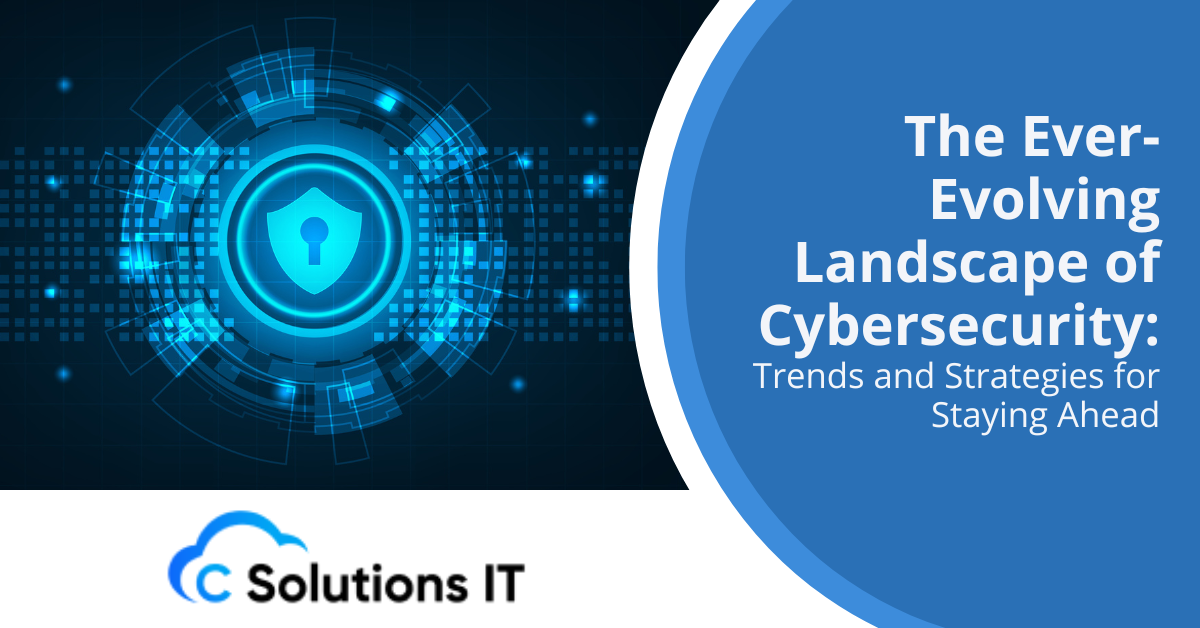The Ever-Evolving Landscape of Cybersecurity: Trends and Strategies for Staying Ahead

In the digital age, cybersecurity has become a paramount concern for individuals, businesses, and governments alike. As technology continues to advance at a breakneck pace, so do the threats and challenges posed by malicious actors seeking to exploit vulnerabilities for their own gain. This article delves into the latest cybersecurity trends and provides actionable strategies to help you stay ahead of the curve and safeguard your digital assets.
The realm of cybersecurity is a dynamic battleground where attackers and defenders are engaged in a constant game of cat and mouse. Cybercriminals are continuously refining their tactics, leveraging cutting-edge technologies and exploiting new vulnerabilities to breach systems and compromise data. Consequently, organizations and individuals must remain vigilant and proactive in their approach to cybersecurity, adopting the latest strategies and tools to fortify their defenses.
Trend 1: The Rise of Artificial Intelligence and Machine Learning
Artificial Intelligence (AI) and Machine Learning (ML) have emerged as powerful tools in the cybersecurity arsenal, but they also present new challenges. On the one hand, AI and ML can be leveraged to detect and respond to threats more efficiently, identifying patterns and anomalies that might otherwise go unnoticed. However, these technologies can also be exploited by attackers to create more sophisticated and evasive malware, making it harder to detect and mitigate threats.
To stay ahead of this trend, organizations must invest in robust AI and ML solutions while implementing rigorous testing and validation processes to ensure their effectiveness against evolving threats. Additionally, it is crucial to maintain a skilled cybersecurity workforce capable of understanding and managing these advanced technologies.
Trend 2: The Proliferation of Internet of Things (IoT) Devices
The Internet of Things (IoT) has revolutionized the way we live and work, connecting a vast array of devices to the internet. However, this interconnectivity also introduces new security risks. Many IoT devices lack adequate security measures, making them vulnerable to attacks and potential entry points for cybercriminals to gain access to larger networks.
To mitigate these risks, organizations must adopt a comprehensive IoT security strategy. This includes implementing robust authentication and encryption protocols, regularly updating device firmware, and segmenting IoT devices from critical systems. Additionally, user education and awareness campaigns are essential to ensure that individuals understand the potential risks associated with IoT devices and take appropriate precautions.
Trend 3: The Evolving Threat of Ransomware
Ransomware attacks have become increasingly sophisticated and widespread, posing a significant threat to individuals and organizations alike. These attacks involve malicious software that encrypts data and demands a ransom payment for its decryption, often resulting in significant financial losses and operational disruptions.
To combat this trend, organizations must implement robust backup and recovery strategies, ensuring that critical data can be restored in the event of an attack. Additionally, regular software updates, employee training, and the implementation of advanced security solutions, such as endpoint protection and network monitoring, are crucial in preventing and mitigating ransomware attacks.
Trend 4: The Importance of Cloud Security
As more organizations migrate their operations to the cloud, ensuring the security of cloud-based systems and data has become a top priority. While cloud services offer numerous benefits, including scalability and cost-effectiveness, they also introduce new security challenges, such as data breaches, unauthorized access, and misconfiguration issues.
To address these challenges, organizations must adopt a comprehensive cloud security strategy that includes robust access controls, data encryption, and continuous monitoring and auditing. Additionally, it is essential to work closely with cloud service providers to ensure that security measures are aligned with industry best practices and regulatory requirements.
Trend 5: The Emergence of Zero Trust Security Models
Traditional perimeter-based security models are becoming increasingly ineffective in the face of modern threats. As a result, organizations are turning to zero trust security models, which assume that all users and devices, regardless of their location or affiliation, are potential threats until proven otherwise.
Implementing a zero trust security model requires a multi-layered approach that includes robust identity and access management, continuous monitoring and validation, and the principle of least privilege. By adopting this approach, organizations can better protect their assets and data, even in the face of sophisticated attacks and insider threats.
Stay Informed
The cybersecurity landscape is constantly evolving, presenting new challenges and opportunities for organizations and individuals alike. By staying informed about the latest trends and adopting proactive strategies, you can fortify your defenses and minimize the risk of falling victim to cyber threats.
At C Solutions IT, we understand the importance of staying ahead of the curve in cybersecurity. Our team of experts is dedicated to providing cutting-edge solutions and services to help our clients navigate the ever-changing cybersecurity landscape. We leverage the latest technologies and industry best practices to ensure that your digital assets are protected against emerging threats.
contact C Solutions IT today to learn more about our comprehensive cybersecurity offerings and how we can help you safeguard your organization’s digital future.
